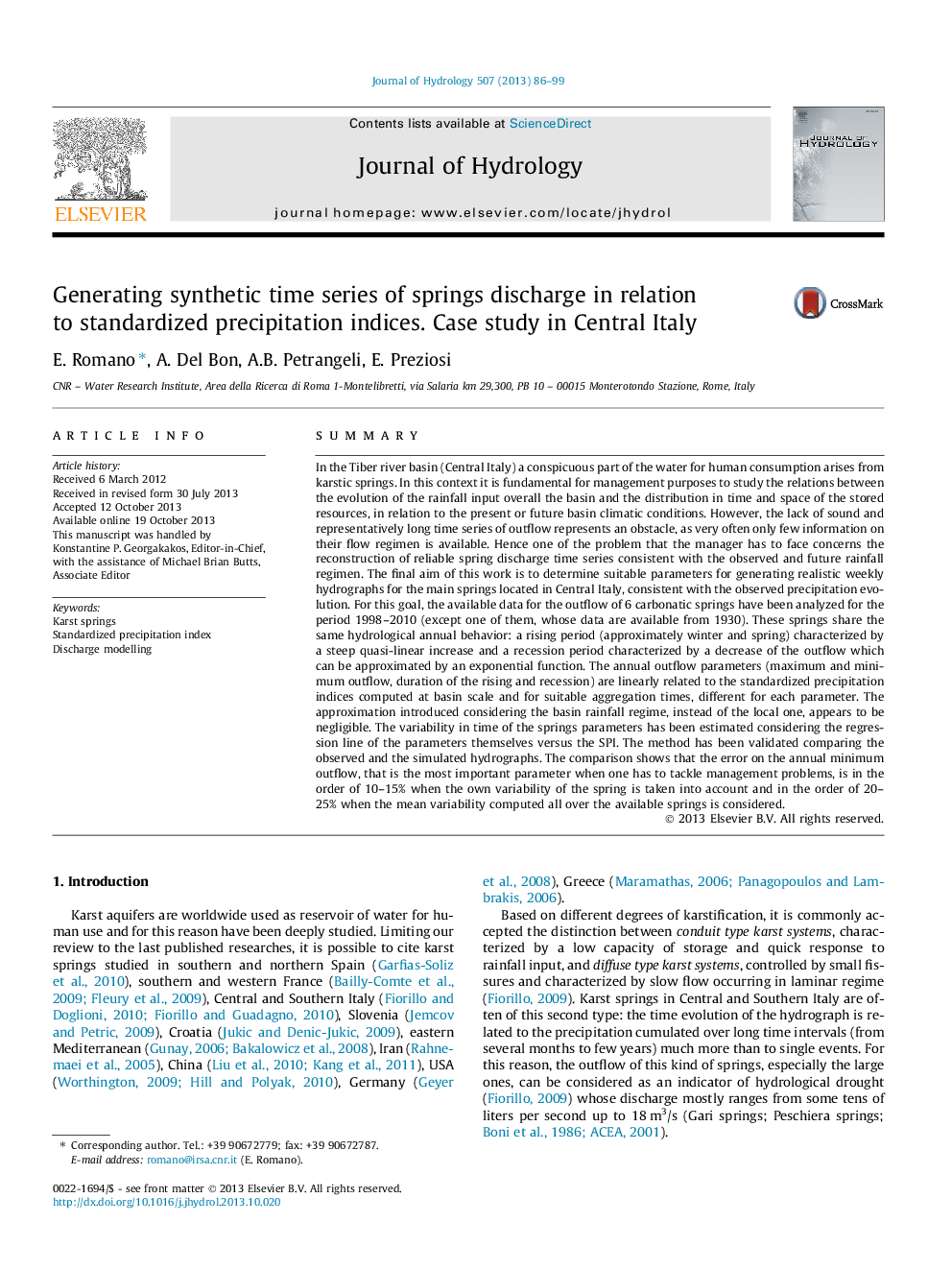| کد مقاله | کد نشریه | سال انتشار | مقاله انگلیسی | نسخه تمام متن |
|---|---|---|---|---|
| 4576123 | 1629941 | 2013 | 14 صفحه PDF | دانلود رایگان |

• Main goal: to determine suitable parameters for generating realistic hydrographs of karstic springs.
• We analyzed the precipitation pattern by means of standardized indices.
• We analyzed the hydrographs evolution by parameterization of the discharge curves.
• The best relation between precipitation indices and parameters discharge has been captured.
• These relations have been used for generating synthetic time series of discharge.
SummaryIn the Tiber river basin (Central Italy) a conspicuous part of the water for human consumption arises from karstic springs. In this context it is fundamental for management purposes to study the relations between the evolution of the rainfall input overall the basin and the distribution in time and space of the stored resources, in relation to the present or future basin climatic conditions. However, the lack of sound and representatively long time series of outflow represents an obstacle, as very often only few information on their flow regimen is available. Hence one of the problem that the manager has to face concerns the reconstruction of reliable spring discharge time series consistent with the observed and future rainfall regimen. The final aim of this work is to determine suitable parameters for generating realistic weekly hydrographs for the main springs located in Central Italy, consistent with the observed precipitation evolution. For this goal, the available data for the outflow of 6 carbonatic springs have been analyzed for the period 1998–2010 (except one of them, whose data are available from 1930). These springs share the same hydrological annual behavior: a rising period (approximately winter and spring) characterized by a steep quasi-linear increase and a recession period characterized by a decrease of the outflow which can be approximated by an exponential function. The annual outflow parameters (maximum and minimum outflow, duration of the rising and recession) are linearly related to the standardized precipitation indices computed at basin scale and for suitable aggregation times, different for each parameter. The approximation introduced considering the basin rainfall regime, instead of the local one, appears to be negligible. The variability in time of the springs parameters has been estimated considering the regression line of the parameters themselves versus the SPI. The method has been validated comparing the observed and the simulated hydrographs. The comparison shows that the error on the annual minimum outflow, that is the most important parameter when one has to tackle management problems, is in the order of 10–15% when the own variability of the spring is taken into account and in the order of 20–25% when the mean variability computed all over the available springs is considered.
Journal: Journal of Hydrology - Volume 507, 12 December 2013, Pages 86–99